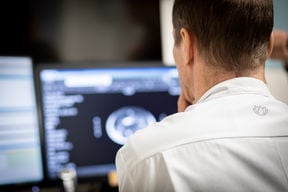Both physicians and nurses in Finland are dissatisfied with the usability of electronic health record systems

Finnish researchers are among the first in the world to have carried out nation-wide survey studies on physicians’ and nurses’ experiences of using electronic health record (EHR) systems. The study reveals that Finnish physicians and nurses, in general, are dissatisfied with the usability of EHR systems.
In surveys previously carried out in other countries, nurses have been found to be more content with the systems than physicians, but the findings of this study contradicted with those findings. Professor of Practice at Aalto University, Johanna Kaipio, notes that the user experiences of nurses carrying out clinical tasks have previously been studied less than those of physicians.
‘As a professional group, physicians are more critical. The views of nurses doing clinical work in terms of development needs may not arise in the same ways as regular physicians’. This may have influenced the general outlook on professional groups’ level of satisfaction towards the systems,’ Kaipio says.
Finnish physicians and nurses, however, have different views on what is working in current EHR systems and what is not. There is a wide array of EHR systems used in Finland, both in terms of their functions and implementation. Some systems serve the needs of nurses better, while others the needs of physicians.
The study finds that nurses were more satisfied than physicians on how EHR systems support collaboration and information exchange. They also ranked higher how the systems support routine tasks and enable retrieving patient data. Physicians, in turn, were more satisfied than nurses with the technical stability of the systems, learnability of the systems, and systems’ support for documenting patient information.
‘Nurses consider it important that documenting patient information is fluent, whereas physicians value summaries of patient information provided by the systems needed to support decision-making,’ Kaipio sums up.
Development of the systems should take place with consideration to both professional groups. Researchers point in their article that the EHR systems physicians were most satisfied with in terms of usability have been developed in collaboration with physicians.
Kaipio points out that more research on user experiences of EHR systems is needed and the development of the systems influenced this way. The work should also increasingly include system end-users and consider the different use contexts and purposes, along with the potential users.
‘There is plenty of room for improvement in the systems, and their implementation reflects the fact that their design has not included an adequate understanding of the work and needs of the end users. Currently, poor usability of the systems results in inefficiency and frustration among physicians and nurses alike.’
Tarja Heponiemi, Research Professor at the Finnish Institute for Health and Welfare, says that ‘We could reduce the work burden of people working in healthcare and improve their well-being by investing in well-functioning and user-friendly EHR systems. Offering sufficient orientation and education is also important, especially when we introduce new systems or features.’
The study reported by Aalto University, Satakunta Hospital District, the Finnish Institute for Health and Welfare and Helsinki University Hospital involved 3,013 physicians and 2,560 nurses working in a public healthcare centre or hospital in 2017.
The study has been funded by the Strategic Research Council at the Academy of Finland and the Ministry of Social Affairs and Health. The results were published in International Journal of Medical Informatics.
Link to research article: https://doi.org/10.1016/j.ijmedinf.2019.104018
Further information
Johanna Kaipio
Professor of Practice
Aalto University
Tel. +358 50 5936 822
[email protected]
Tarja Heponiemi
Research Professor, The Finnish Institute for Health and Welfare
Tel. +358 29 524 7434
[email protected]
- Published:
- Updated:
Read more news

DeployAI Partners Gather for Heart Beat Meeting in Helsinki
The European DeployAI project's partners gathered for the Heart Beat meeting hosted by Aalto University Executive Education in Helsinki.
Get to know us: Associate Professor Maria Sammalkorpi
Sammalkorpi received her doctorate from Helsinki University of Technology 2004. After her defence, she has worked as a researcher at the Universities of Princeton, Yale and Aalto.
Aalto computer scientists in ICML 2024
Computer scientists in ICML 2024